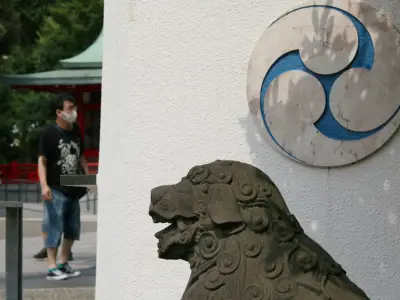When it comes to storytelling, structure matters. Whether you're planning a bestselling novel, writing a short story, or analysing a beloved book or film, understanding Freytag’s Pyramid gives you a clear lens to see the shape of a compelling narrative.
In this post, we’ll break things down in a straightforward and approachable way, so whether you’re new to storytelling or simply brushing up, you’ll walk away with a deeper grasp of how stories work and why some keep us turning the page.
Let’s take a look at Freytag’s Pyramid, also known as the storytelling pyramid, and explore each of its five key stages. Along the way, you’ll find practical examples and tips for recognising and using this structure in your own writing.
Jump to:
- What is Freytag's Pyramid?
- Exposition – Setting the Scene
- Rising Action – Building the Tension
- Climax – The Turning Point
- Falling Action – Unravelling the Consequences
- Denouement (Resolution) – The New Normal
- Why Use Freytag’s Pyramid in Your Writing?
- Frequently Asked Questions about Freytag’s Pyramid
- Study Our Novel Writing Diploma for £29
Recommended for you!
Best SellersWhat is Freytag's Pyramid?
Freytag’s Pyramid is a model of dramatic structure introduced by German novelist and playwright Gustav Freytag in the 19th century. Based on classical Greek and Shakespearean drama, this five-part framework outlines the typical progression of a story, from the calm beginning to the climactic peak and eventual resolution.
You might also hear this structure referred to as Freytag’s triangle, the plot pyramid, or the 5 point plot structure. They all point to the same idea: stories often follow a recognisable pattern.
The definition of Freytag's Pyramid is simple: it divides a story into five distinct stages:
- Exposition
- Rising Action
- Climax
- Falling Action
- Denouement (or Resolution)
1. Exposition – Setting the Scene

This is where your story begins. In the exposition, you introduce the world of the story, the main characters, and the initial situation. You also lay the groundwork for the central conflict, though it may not be fully developed yet.
Think of it as the audience being invited into the world; it’s where we get our bearings.
What to include in the exposition:
- The protagonist (main character)
- The setting (time and place)
- Hints of the central conflict
- Background information necessary for understanding the plot
Example: In The Lion King, the exposition includes Simba’s birth, the pride’s kingdom, and Scar’s early resentment, setting the stage for everything to come.
2. Rising Action – Building the Tension
Here, the story begins to heat up. The rising action consists of a series of events and complications that increase tension and deepen the central conflict. These events drive the plot forward and raise questions the audience wants answered.
This stage often introduces obstacles, antagonists, and subplots that complicate the protagonist’s journey.
What makes the rising action work:
- A clear goal or desire for the protagonist
- Increasing stakes or consequences
- Conflict becoming more apparent or dangerous
- Emotional engagement for the reader
Example: In Harry Potter and the Philosopher’s Stone, the rising action includes Harry discovering he’s a wizard, arriving at Hogwarts, and learning about the mysterious Philosopher’s Stone.
3. Climax – The Turning Point
The climax is the emotional or narrative high point of the story, the moment where everything changes. It’s the most intense part of the plot and often marks a dramatic shift in the character’s journey.
This is where the main conflict reaches its peak, and the outcome hangs in the balance.
What to look for in the climax:
- A major confrontation or decision
- The character’s growth or transformation becomes clear
- The narrative tension hits its highest point
- The central question of the story is addressed
Example: In Frozen, the climax occurs when Anna sacrifices herself for Elsa, demonstrating that love, not fear, is the key to breaking the curse.
4. Falling Action – Unravelling the Consequences
After the dramatic peak, the story begins to settle. The falling action shows the direct consequences of the climax. Conflicts begin to resolve, characters process what’s happened, and the journey moves towards a close.
This stage is often quieter, but no less important. It bridges the gap between the emotional intensity of the climax and the final outcome.
What to include in the falling action:
- The aftermath of the climax
- Final challenges or loose ends being addressed
- Characters reflecting on what they’ve learned or lost
Example: In The Hunger Games, the falling action follows Katniss and Peeta’s final test in the arena and their return home, but not without complications.
5. Denouement (Resolution) – The New Normal
The final stage is the denouement (a French word meaning “to untie”). This is where the story concludes, and we see how life has changed for the characters.
This stage doesn’t necessarily mean a happy ending; it means the story has reached a sense of closure. The conflict is resolved, and the audience is left with an understanding of what the story was really about.
What happens in the denouement:
- The world settles into a new equilibrium
- Characters are changed or returned to peace
- Final messages or themes become clear
- The reader is given a sense of completion
Example: In Toy Story, Woody and Buzz have become friends, and the toys prepare for their new life with Andy, showing how much has changed since the beginning.
Why Use Freytag’s Pyramid in Your Writing?

Using Freytag’s Pyramid as a guide can help you:
- Avoid a flat or aimless plot
- Keep readers engaged by managing pace and tension
- Ensure your story has a clear beginning, middle, and end
- Identify weak points or areas that need development
Whether you’re writing a short story or a full novel, understanding these elements gives your story shape and energy. The beauty of Freytag’s Pyramid lies in its simplicity; it’s easy to learn, yet powerful in practice.
Frequently Asked Questions
Is Freytag’s Pyramid only useful for fiction?
While Freytag’s Pyramid is rooted in fictional storytelling, its principles apply broadly. Screenwriters, memoirists, public speakers, marketers, and even teachers use the model to structure content. Anytime you're trying to guide an audience through a meaningful arc, whether it’s a brand story or a TED talk, this framework helps.
Can I rearrange the order of the pyramid stages?
Generally, no. Freytag’s Pyramid follows a natural progression that mirrors how people process stories. However, you can experiment, especially in postmodern or nonlinear narratives. Just ensure readers don’t feel lost. For example, you might begin in the middle of the action, but still reveal exposition through flashbacks.
What happens if my story doesn’t fit the pyramid perfectly?
That’s perfectly okay. Not every story will hit all five stages with the same intensity or in the same proportions. Freytag’s Pyramid is a guide, not a rulebook. Use it as a diagnostic tool: if your story drags or lacks momentum, check whether one of the key stages is missing or underdeveloped.
Is the denouement always necessary?
It depends on your goals. Some modern stories end abruptly after the climax, leaving readers to interpret the fallout. That said, a satisfying denouement offers emotional closure and thematic clarity, especially in genres like romance, mystery, and drama.
How long should each stage be?
There’s no fixed formula, but here’s a rough guide for balance:
- Exposition: 10–15%
- Rising Action: 50–60%
- Climax: 10%
- Falling Action: 10–15%
- Denouement: 5%
These percentages can shift depending on your genre and audience. For example, thrillers often jump quickly into rising action.
Recommended for you!
Best SellersStudy Our Novel Writing Diploma for £29
Now that you’ve explored Freytag’s Pyramid in detail, you might feel inspired to apply it to your own stories. If you’re ready to learn more about the craft of storytelling, character development, and plotting techniques, the Novel Writing Diploma Course at the Centre of Excellence is the perfect next step. The course is designed for writers of all levels and covers every stage of writing a novel, from initial idea to final polish. For a limited time, you can enrol for a discounted price of £29!













